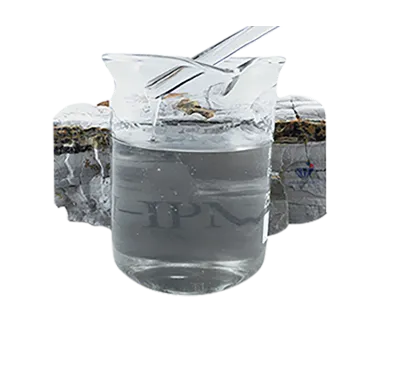
Dec . 15, 2024 01:33 Back to list
Hydroxyethyl Cellulose Applications and Benefits in Paint Formulations and Coatings
Hydroxyethyl Cellulose for Paint A Versatile Additive
Hydroxyethyl cellulose (HEC) is a water-soluble polymer derived from cellulose, and it has gained significant popularity in the paint and coatings industry due to its versatile properties. This additive is primarily utilized to enhance the performance and aesthetic qualities of paints, making it an essential component in both architectural and industrial applications. Understanding the characteristics and advantages of HEC can provide valuable insights into its role in modern paint formulations.
Properties of Hydroxyethyl Cellulose
HEC is produced by the etherification of cellulose, a natural polymer found in the cell walls of plants. The modification with hydroxyethyl groups introduces hydrophilicity, which enables HEC to dissolve in water, forming a clear, viscous solution. This property is particularly advantageous in water-based paints, helping to improve application characteristics without compromising environmental safety.
One of the key properties of HEC is its ability to act as a thickening agent. It can significantly increase the viscosity of paint formulations, which is crucial in preventing sagging and ensuring a smooth application. The viscosity of HEC solutions is temperature and shear-dependent, making it suitable for various paint manufacturing processes.
Furthermore, HEC exhibits excellent dimensional stability in a wide range of pH levels. This stability is essential for maintaining the desired consistency and performance of paints over time, regardless of environmental conditions. HEC also possesses film-forming capabilities, which contribute to the overall durability and integrity of the paint once applied.
Benefits of Using HEC in Paint Formulations
1. Improved Workability HEC enhances the workability of paint, allowing for smoother application and better leveling properties. This leads to a more uniform finish, reducing the occurrence of defects such as brush marks or roller lines.
2. Enhanced Thixotropic Properties HEC exhibits thixotropic behavior, meaning its viscosity decreases under shear stress and returns to its original state when rest. This property is particularly beneficial during application, as it allows painters to spread the paint easily while ensuring that it remains thick enough in the drum to avoid settling.
hydroxyethyl cellulose for paint

3. Water Retention In water-based paints, HEC contributes to water retention, which is crucial for preventing rapid drying. This property allows for extended open times during application, giving painters ample time to work without the paint drying too quickly.
4. Improved Stability The incorporation of HEC in paint formulations helps to stabilize emulsions and prevent separation, which is critical for maintaining the consistency and quality of the product throughout its shelf life.
5. Eco-Friendly Characteristics As an all-natural derivative of cellulose, HEC is considered environmentally friendly. Its use in paints aligns with the growing demand for sustainable and low-VOC (volatile organic compound) products, catering to eco-conscious consumers and regulatory requirements.
Applications of HEC in Paints
HEC is widely used in both interior and exterior paint formulations. In architectural paints, it helps achieve the desired texture, opacity, and sheen levels. For industrial coatings, HEC ensures that products can withstand harsh conditions while maintaining adherence and flexibility.
In addition to emulsions and coatings, HEC is also utilized in specialty paints such as low-sheen finishes, textured coatings, and even adhesives and sealants. Its versatility makes HEC an invaluable additive across multiple segments of the paint industry.
Conclusion
Hydroxyethyl cellulose stands as a key ingredient in modern paint formulations, offering a blend of beneficial properties that enhance performance and application characteristics. Its ability to improve viscosity, water retention, and stability makes it an essential additive for achieving high-quality finishes in various paint types. As the demand for eco-friendly and sustainable products continues to rise, HEC will likely play an increasingly significant role in the paint and coatings industry, supporting both performance and environmental responsibility. By leveraging the advantages of hydroxyethyl cellulose, manufacturers can create innovative and competitive products that meet consumer expectations while adhering to sustainable practices.
-
Versatile Hpmc Uses in Different Industries
NewsJun.19,2025
-
Redispersible Powder's Role in Enhancing Durability of Construction Products
NewsJun.19,2025
-
Hydroxyethyl Cellulose Applications Driving Green Industrial Processes
NewsJun.19,2025
-
Exploring Different Redispersible Polymer Powder
NewsJun.19,2025
-
Choosing the Right Mortar Bonding Agent
NewsJun.19,2025
-
Applications and Significance of China Hpmc in Modern Industries
NewsJun.19,2025







